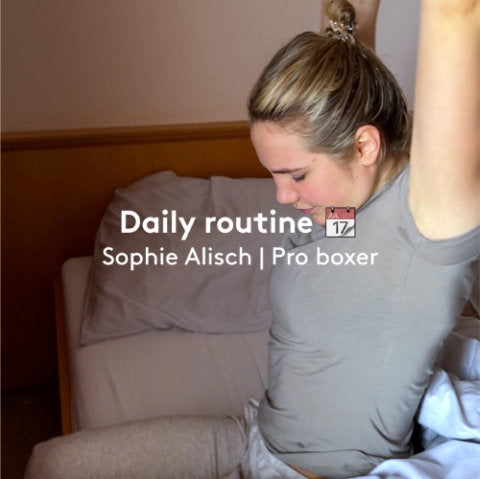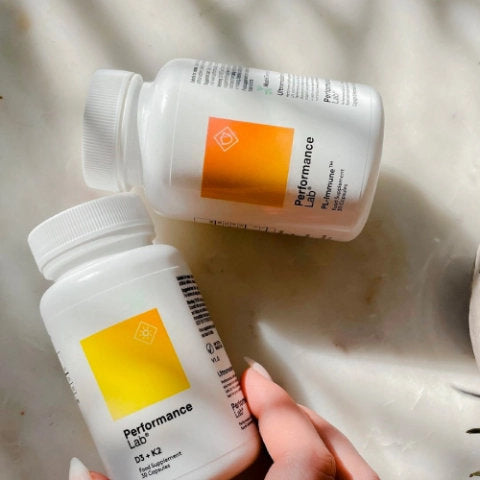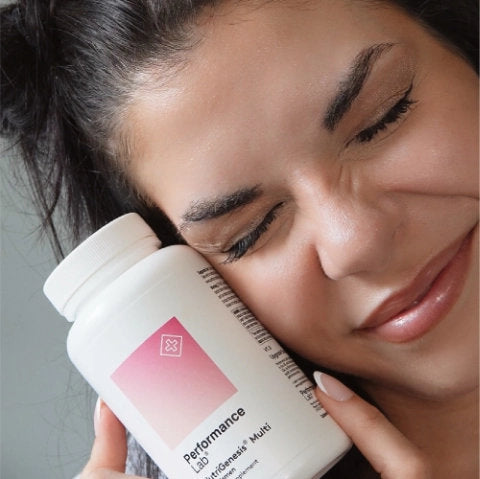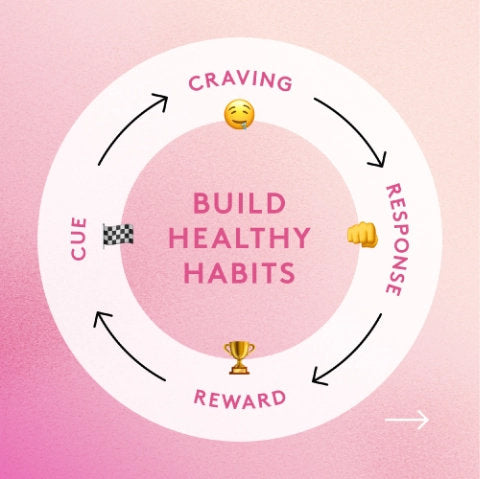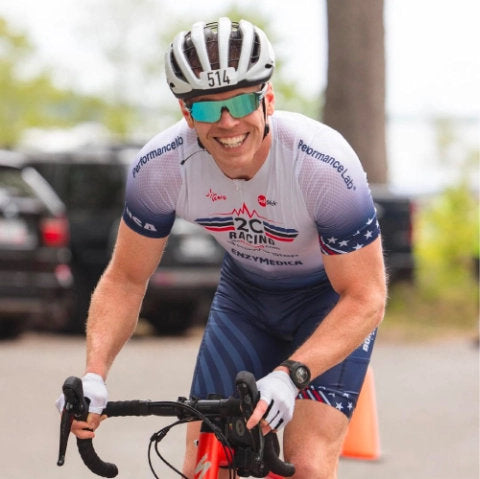The science behind your shape. Why looking good and high-performance may not go hand in hand.
We all want a physique that looks and performs like a high-performance car.
But there’s a funny thing about race cars you may have noticed - especially if you are a fan of Formula 1…
They break down a lot. Much more frequently than your average family car.
But why?
Well, in order to achieve high levels of performance they are built to such fine precision and tolerance that one false move… one inadvertent bump in the road… a little too much heat or not enough heat and BANG. The whole thing goes pop.
The human body is similar.
An athletic physique is the ultimate high-performance machine. It also comes with fine margins.
Push those margins too far and suddenly - or over time - things can go wrong. And that means injury, illness and performance tanking.1
In this article we explain why looking good and performance are not the same thing.
The problem with focusing on aesthetics in sport
There is a perception that the best physiques must make the best athletes. Not true.
Unless we are talking physique sports, this is often not the case in reality. Look at the current top ten heavyweight boxers in the world. With the exception of Anthony Joshua, none look like fitness models. In fact, body fat can be useful for absorbing blows and generating force.
AJ himself shed his chiseled look and 4 kg of muscle to avenge his defeat to the notoriously chunky Mexican Andy Ruiz.
In combat or other multi-skill sports, performance is determined by more than just aesthetics.
Functional muscle mass
That’s not to say aesthetics (in particular low-fat mass) are not important. For example, in weight category sports it makes sense to try to achieve lower body fat to maximize how much ‘functional’ muscle mass we have. But it can be problematic.
To reach very low levels of body fat there is often the pressure of severe dieting. This requires periods of low-calorie intake which can cause training to suffer. If not programmed correctly, our energy levels are likely to be too low to sustain optimal performance.2
If we aren’t training and recovering effectively, we can’t maximize training adaptations and reach our performance potential.
Great aesthetics doesn't always translate into great athletics
Increases in muscle mass may also come at a cost. More muscle does not always equal better performance. There is a reason why endurance athletes try to maintain lower muscle mass3 than many other sports, whilst still having sufficient muscle to meet the demands of the sport.
Muscle places an increased energy demand on the body. Both in the extra effort of carrying that weight around and the increased energy expenditure and demand for oxygen when it’s active.
The problem with muscle mass
Having more muscle and weight than we need can cause a whole world of issues for certain types of athletes. And the type of training to achieve increased muscle mass may also distract from the types of training required to maximize performance.
This is not always the case, of course. There are examples where fat loss and muscle gain (and the strength/power associated with it) might be of benefit for performance and injury prevention.
But the point is - aesthetics doesn’t always improve athletics.
There are lots of shades of grey, including the demands of the individual sports. But it is important to understand the ‘look’ we need to get the most out of our performance. That is, after all, an athlete’s priority, not a modelling contract (but nice if you can do both!)
The pursuit of aesthetics does not always equal improved performance. And there are risks associated with this pursuit IF we do not monitor true performance effectively
What about athletes that are year-round lean?
This is where the water muddies further.
There is almost certainly a genetic component among many other interlinking factors that determine how much (or little) fat mass4 we can reach and maintain before it has a detriment on health performance.
That’s why trying to look like your favorite athlete and assuming you will perform the same is a dangerous game.
Interestingly, in some cases a loss of ‘performance’ in one area that might be sacrificed to improve overall performance in another.
The careful balance of power to weight ratio
For example, in sports like cycling where power to weight ratio is everything5, an athlete might sacrifice weight (both muscle and fat mass) and risk of reducing their peak power in order to improve power to weight ratio.
This might make the difference in winning an individual race, but if the body is pushed too far into the red for too long – it will eventually come at a cost. Going over our ‘peak’ is a slippery slope to illness, injury and poor performance.
Elite sports are about fine margins and peaking at the right time. It is unsurprising that very, very few cyclists ever win more than one of the major grand tours in any one year.6 For the recreational athlete, without the right monitoring and support, this is an even more dangerous game to play. And people are more likely to get it wrong than right.
![]()
What happens physiologically when body fat gets too low?
By now it should be pretty clear that what ‘too low’ is will depend on a number of different factors and will vary between individuals. But at some stage the effects of low body fat mass are going to take hold, whoever the athlete is.
Many of the effects of low body fat are mediated through a hormone called leptin.
Leptin is produced in fat cells and acts as a fuel sensor in the body. The lower the body fat we have, the less leptin we are likely to produce.7
When body fat gets too low it is leptin that mediates many of the effects we suffer via central mechanisms in the brain. This includes lower levels of thyroid hormones which govern metabolism and energy levels; lower levels of muscle building hormones and higher levels of stress hormones.
The problem with fat loss
From an evolutionary perspective, this is our body going into a state of conserving energy for essential functions. Which is far, far away from the physiological status the body needs to be healthy, to train and perform at its best.
Reproductive hormones regulate a number of things8 including muscle mass, iron status, bone health and a regular menstrual cycle in women. Low body fat and low energy availability can cause serious health issues and ultimately destroy an athlete’s performance.
Having a lack of energy to support physiological function means the body is going to strip back its functions in order of importance for survival in these periods of low energy intake and body fat mass. Athletes that have consistently low energy availability are likely to develop the symptoms of Relative Energy Deficiency in SPORT (RED-S).9
These markers act as a warning sign - for athletes of both genders – that they may have pushed their physical limits too far.
What are the signs and risk factors for RED-S
RED-S is particularly common in endurance sports.
Especially when an athlete tries to overcome poor performance with an even stricter with a diet and even harder training.
A serious downturn in performance – a lack of strength, coordination, and energy. Or health - poor immune function and iron status. Plus, increased injury risk, symptoms of over-training, deteriorating mood and mental health are all clear RED-S flags.
High training volumes; periods of trying to stay too lean and a failure to recognize warning signs creates a perfect storm for RED-S
It is therefore important to monitor these symptoms and design nutrition and training programs that match in terms of energy intake and expenditure. Keeping body fat mass in our functional range and only dipping into the ‘low’ end when essential, with full awareness of the impact on performance this may have.
How low should you go?
Over time this allows us to figure out at what points we start to have reductions in performance in relation to our body fat mass and/or dietary approach. This also highlights the importance of collecting as much data as possible, to figure out exactly what we can (and can’t) get away with. And how long we can stay ‘low’ before it starts to impact on our performance, our health and risk of injury.
As RED-S is associated with energy deficiency10 there is a simple calculation you can do to see if you are at risk and to estimate your energy availability (EA).
EA = (Dietary calorie intake – Energy expended during exercise)/Fat free mass
For example, an athlete who weighs 70 kg with a body fat percentage of 15% (fat free mass of 59.5kg) eats 2000 kcal per day and estimates they burn 600 kcal in training.
EA = (2000-600)/59.5 = 1400/59.5 = 23.5kcal/kgFFM/d
An energy availability of less than 30 kcal/kg/d would put this athlete at risk of RED-S and over training syndrome if sustained for long periods.
An EA of 30-45 kcal/kg can only be maintained for short periods such as during fat loss, or when trying to make weight for sports without severe effects.
Even within these ranges there is likely to be an individual response to ‘what we can get away with and for how long’ before performance is severely impaired. This will also be the case when it comes to the length of the recovery process if we have pushed the envelope too far.
Again, understanding your body and focusing on chasing performance - and not physique - should be at the center of your approach. If you can get both then great; but you shouldn’t sacrifice one for the other.
In conclusion…
So is it possible to look great aesthetically AND perform at your best athletically? Heck, yes.
In fact, in certain sports it may be important for maximizing performance.
However, we should be aware that blindly chasing the perfect physique without considering the impacts of low body fat mass and low energy availability will come at a cost. Health-wise, long-term performance-wise or injury-wise.
High level performance requires a focus on nutrition and specific training approaches that targets a specific physique. All the while ensuring we don’t fall off a health or performance cliff.
More serious athletes should be collecting data to guide these decisions – to find out where the cliff edge is. Especially if there are time limits on achieving particular performance goals.
For recreational athletes it is just as important to achieve changes body composition carefully. Using a pragmatic approach so we know when we’re in our physique/ performance sweet spot and when we are coming out the other side. So that it doesn’t impact negatively on our results or well-being.
References
- https://www.ncbi.nlm.nih.gov/pmc/articles/PMC4672016/
- https://link.springer.com/article/10.1007/s40279-017-0790-3
- https://www.fasebj.org/doi/full/10.1096/fj.201700827R
- https://www.ncbi.nlm.nih.gov/pubmed/2253845
- https://www.bbc.co.uk/sport/cycling/44694122
- https://en.wikipedia.org/wiki/List_of_Grand_Tour_general_classification_winners
- https://jissn.biomedcentral.com/articles/10.1186/1550-2783-11-7
- https://www.sciencedirect.com/topics/neuroscience/steroid-hormones
- https://bjsm.bmj.com/content/48/7/491.short
- https://www.ncbi.nlm.nih.gov/pubmed/21793767






